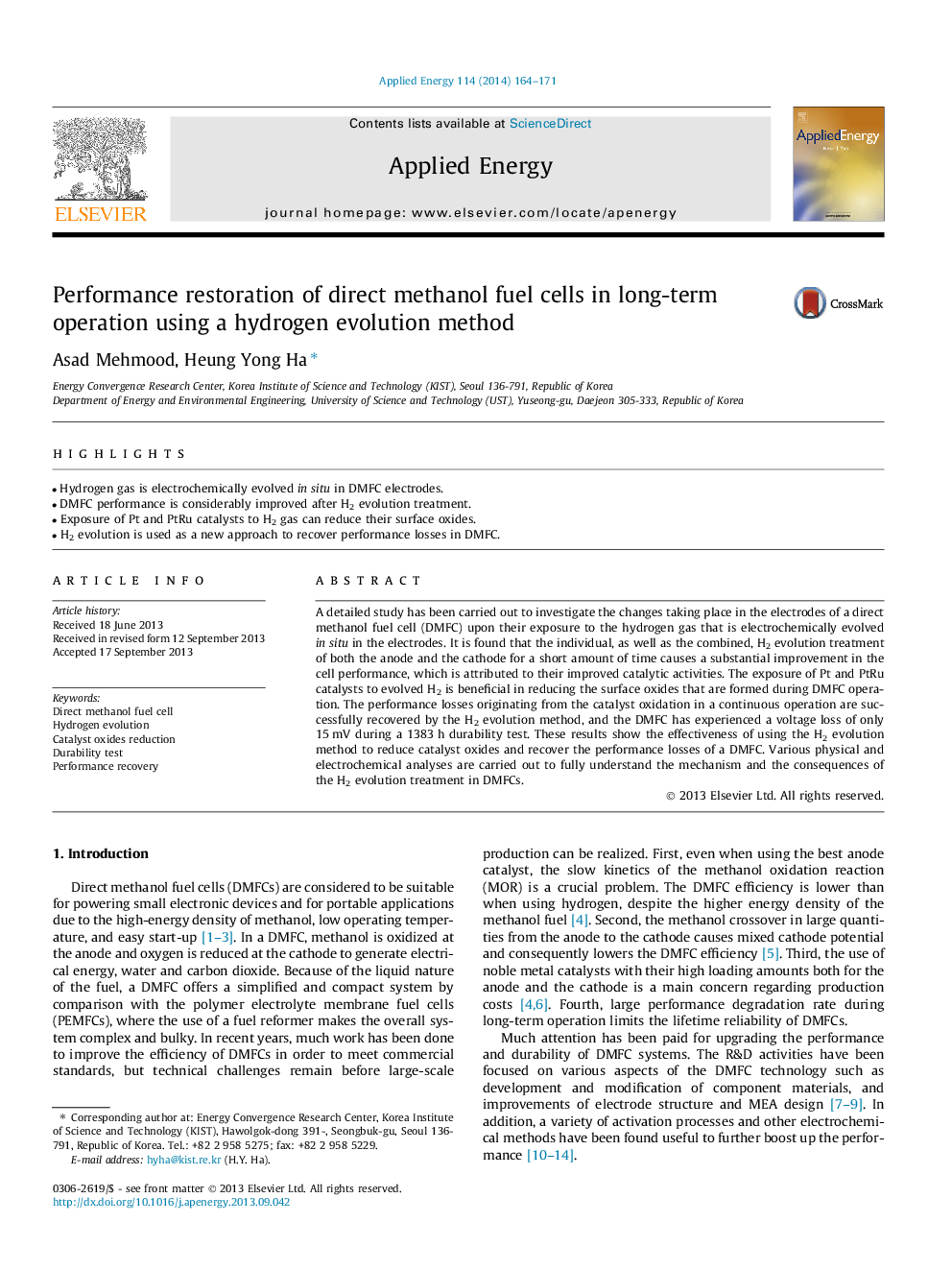| Article ID | Journal | Published Year | Pages | File Type |
|---|---|---|---|---|
| 6691430 | Applied Energy | 2014 | 8 Pages |
Abstract
A detailed study has been carried out to investigate the changes taking place in the electrodes of a direct methanol fuel cell (DMFC) upon their exposure to the hydrogen gas that is electrochemically evolved in situ in the electrodes. It is found that the individual, as well as the combined, H2 evolution treatment of both the anode and the cathode for a short amount of time causes a substantial improvement in the cell performance, which is attributed to their improved catalytic activities. The exposure of Pt and PtRu catalysts to evolved H2 is beneficial in reducing the surface oxides that are formed during DMFC operation. The performance losses originating from the catalyst oxidation in a continuous operation are successfully recovered by the H2 evolution method, and the DMFC has experienced a voltage loss of only 15Â mV during a 1383Â h durability test. These results show the effectiveness of using the H2 evolution method to reduce catalyst oxides and recover the performance losses of a DMFC. Various physical and electrochemical analyses are carried out to fully understand the mechanism and the consequences of the H2 evolution treatment in DMFCs.
Related Topics
Physical Sciences and Engineering
Energy
Energy Engineering and Power Technology
Authors
Asad Mehmood, Heung Yong Ha,
